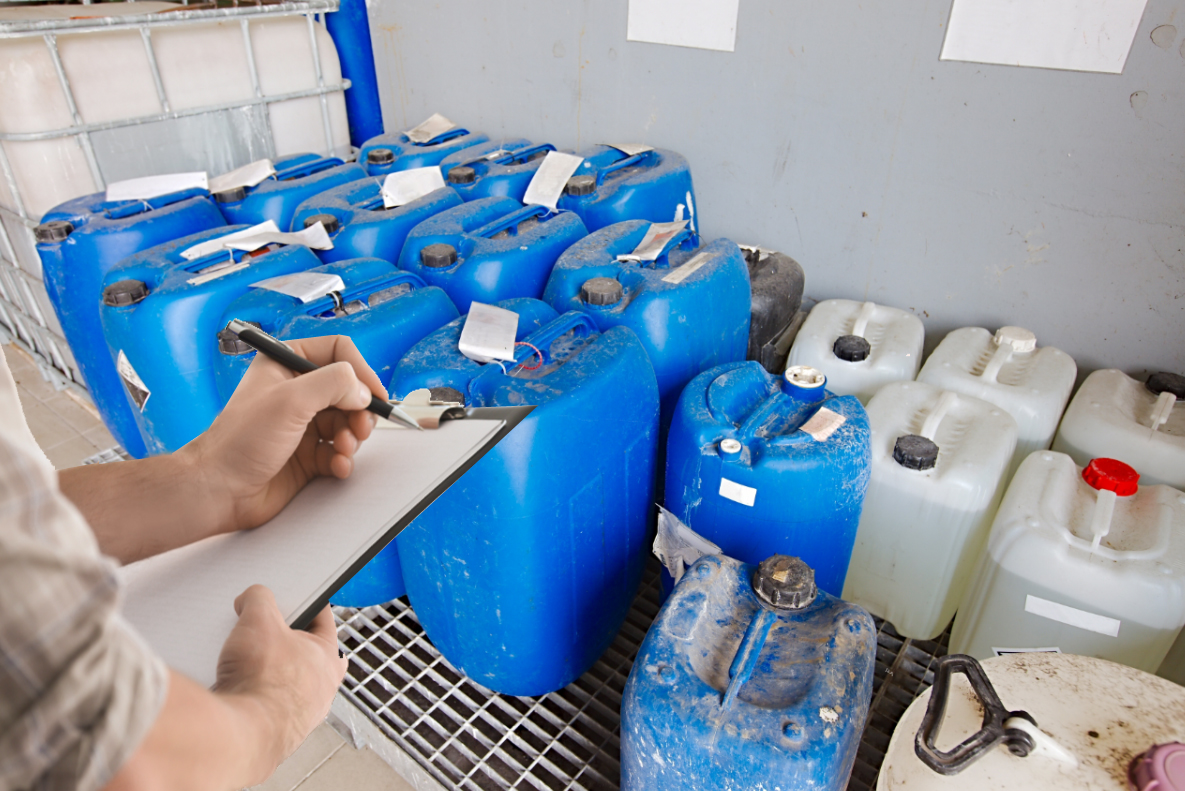Who Needs What?
By Roger Marks
OSHA Hazard Communication Training for “Hazardous Chemicals”
The goal of OSHA HazCom training is to protect employees from the hazards of chemicals in the workplace. All employees who may be exposed to hazardous chemicals must be trained according to 29 CFR 1910.1200(h)(1) at the time of employee’s initial assignment. Update training must be provided whenever new chemicals are introduced into the work area. OSHA’s Hazard Communication standard
, sometimes called HCS, requires employers to provide training for all employees who are or may be exposed to hazardous chemicals in the workplace.
Employee HazCom training must cover:
- awareness of all covered hazards present in the employee’s work area
- how to recognize and read hazard labels, markings, Safety Data Sheets, and other resources that provide information about the chemicals employees work with
- how to detect the presence or release of hazardous chemicals (e.g., using monitoring devices, visual cues, odors, and so on)
- available methods of exposure protection—personal protective equipment, work practices, emergency procedures, and so on
DOT Hazmat Employee Training for “Hazardous Materials”
DOT Hazmat training is intended to ensure the safe transportation of hazardous materials to protect the public, supply chain personnel, and the nation’s infrastructure. Hazmat employees need to be trained according to 49 CFR 172.704 within 90 days of starting a hazmat job and every three years thereafter. Update training is required when applicable regulations change, the employee’s responsibilities change, or new materials enter the workplace.
DOT requires hazmat training for all “hazmat employees,” defined at 49 CFR 171.8 as anyone who “in the course of full time, part time, or temporary employment directly affects hazardous materials transportation safety.”
Employees who affect transportation safety are those who perform job functions like identifying hazmat shipments, classifying materials, selecting packaging, picking and packing orders, affixing hazmat marks and labels, loading and unloading motor vehicles, and others.
DOT hazmat training must cover:
- Hazmat general awareness—a “big picture” perspective on the dangers of hazardous materials in transport
- Hazmat security awareness—how to respond to security threats
- Hazmat function-specific training—targeted training on specific “pre-transportation functions” that the employee will perform, such as packaging, marking, labeling, loading, and unloading
- Hazmat safety training*—training to help employees recognize and protect themselves from the hazards of the materials they work with (note that DOT’s hazmat safety training requirement can be satisfied by providing OSHA Hazard Communication training described above)
- Hazmat security plan training—facilities that offer high-volume or high-consequence hazmat shipments must maintain a hazmat security plan (49 CFR 172.800), and facilities that must have a plan must also train employees on the plan and any relevant responsibilities therein
Watch this
video
to learn more about DOT’s hazmat training requirements.
EPA (RCRA) Personnel Training for “Hazardous Waste”
The goal of EPA personnel training for hazardous waste is to ensure proper management and disposal of hazardous waste and prevent damage to human health and environmental contamination. The training is defined in 40 CFR 262.17(a)(7). Hazardous waste facility personnel must be trained within six months of starting a hazardous waste job and annually thereafter. Update training is required when rules change or when employees take on new responsibilities.
Under the Resource Conservation and Recovery Act (RCRA) regulations in 40 CFR Parts 260–280 et al, facilities that generate hazardous waste must provide training for “hazardous waste personnel,” defined as employees who identify, handle, or store hazardous waste; inspect containers; supervise personnel; or read and apply the regulations.
EPA defines “hazardous waste facility personnel” at 40 CFR 260.10 to mean “persons who work at, or oversee the operations of, a hazardous waste facility, and whose actions or failure to act may result in noncompliance.”
RCRA hazardous waste training must include:
- instruction to teach the employee hazardous waste management procedures relevant to his or her position
- relevant emergency response procedures and equipment relevant to the employee’s job, including how to properly use monitoring equipment, cut-off systems, alarms, and more where applicable
Emergency response training provided to comply with OSHA’s Hazardous Waste Operations and Emergency Response (HAZWOPER) Standard at 29 CFR 1910.120(p) and (q) can be used to satisfy the emergency response portion of RCRA training. The HAZWOPER Standard requires training for many levels of personnel—learn more about HAZWOPER training on the Lion Technology
website
.
Watch this
video
to learn more about RCRA hazardous waste training requirements.
The Right Training at the Right Time
For chemical industry managers, understanding the nuances of hazmat, hazardous waste, and hazard communication training standards is crucial. Together, the training standards above work to protect employees, the public, infrastructure, and the environment from the dangers of hazardous chemicals.
By providing the right training at the right time, you can limit confusion, avoid redundant information, and be confident that your employees know their responsibilities under the myriad programs that impact their day-to-day work with chemicals.
Roger Marks is a content writer and regulatory researcher for Lion Technology Inc., which provides workplace safety training. Find OSHA safety training for workers on OSHA HazCom, HAZWOPER, confined spaces, fall protection, forklift safety, lockout/tagout, PPE, and more at on the Lion Technology
website
.Training for HazCom, Hazmat, and Haz Waste
TOC
NEWSWATCH
COMMUNITY
the Synergist
DEPARTMENTS

SPONSORED BY


